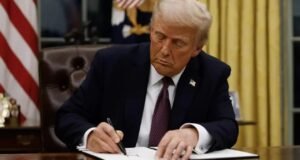
The Strait of Hormuz, a narrow maritime passage between Oman and Iran, has once again emerged as a focal point of global concern as tensions in the Middle East intensify, particularly after recent US military strikes on Iran.
This slender waterway holds immense geopolitical and economic significance, serving as the only sea route for oil-rich Gulf nations—including Saudi Arabia, Iraq, Kuwait, the UAE, and Qatar—to access the Arabian Sea and global markets.
Despite its width of just 39 kilometres at its narrowest point, the shipping lanes are confined to only three kilometres in each direction, making the route particularly susceptible to disruption. Every day, approximately 17.2 million barrels of oil—over one-sixth of the world’s supply—pass through this corridor. Alongside oil, it is also critical for liquefied natural gas exports, with Qatar relying on it to move nearly one-third of the world’s LNG.
The strategic value of the strait has long prompted major military deployments, especially by the United States, whose Fifth Fleet, based in Bahrain, plays a leading role in ensuring safe passage for commercial vessels. Its proximity to regional flashpoints has made it a regular scene of tension and conflict. Historical incidents include the Iran-Iraq War in the 1980s, during which oil tankers were attacked, and the 1988 tragedy when a US warship mistakenly shot down an Iranian passenger jet. In more recent years, sabotage of tankers in 2019 and confrontations between Iranian and Western naval forces have kept the strait at the centre of global energy security discussions.
The UK’s 2019 accusation that Iranian vessels attempted to block a British ship through the strait, following the seizure of an Iranian tanker near Gibraltar, further highlighted the waterway’s role in geopolitical disputes. Iran denied the charges but the incident underscored how quickly tensions around the strait can escalate.
Though countries like Saudi Arabia and the UAE have proposed or developed pipelines as alternative routes to bypass the Strait of Hormuz, these projects are limited in capacity. For now, the strait remains the Gulf’s primary export artery for oil and gas, ensuring that any conflict or instability in the region has immediate consequences for global energy markets and political stability.
With tensions flaring once more, the world’s eyes are again on this narrow stretch of water, whose importance far exceeds its size.
 Weekly Bangla Mirror | Bangla Mirror, Bangladeshi news in UK, bangla mirror news
Weekly Bangla Mirror | Bangla Mirror, Bangladeshi news in UK, bangla mirror news







